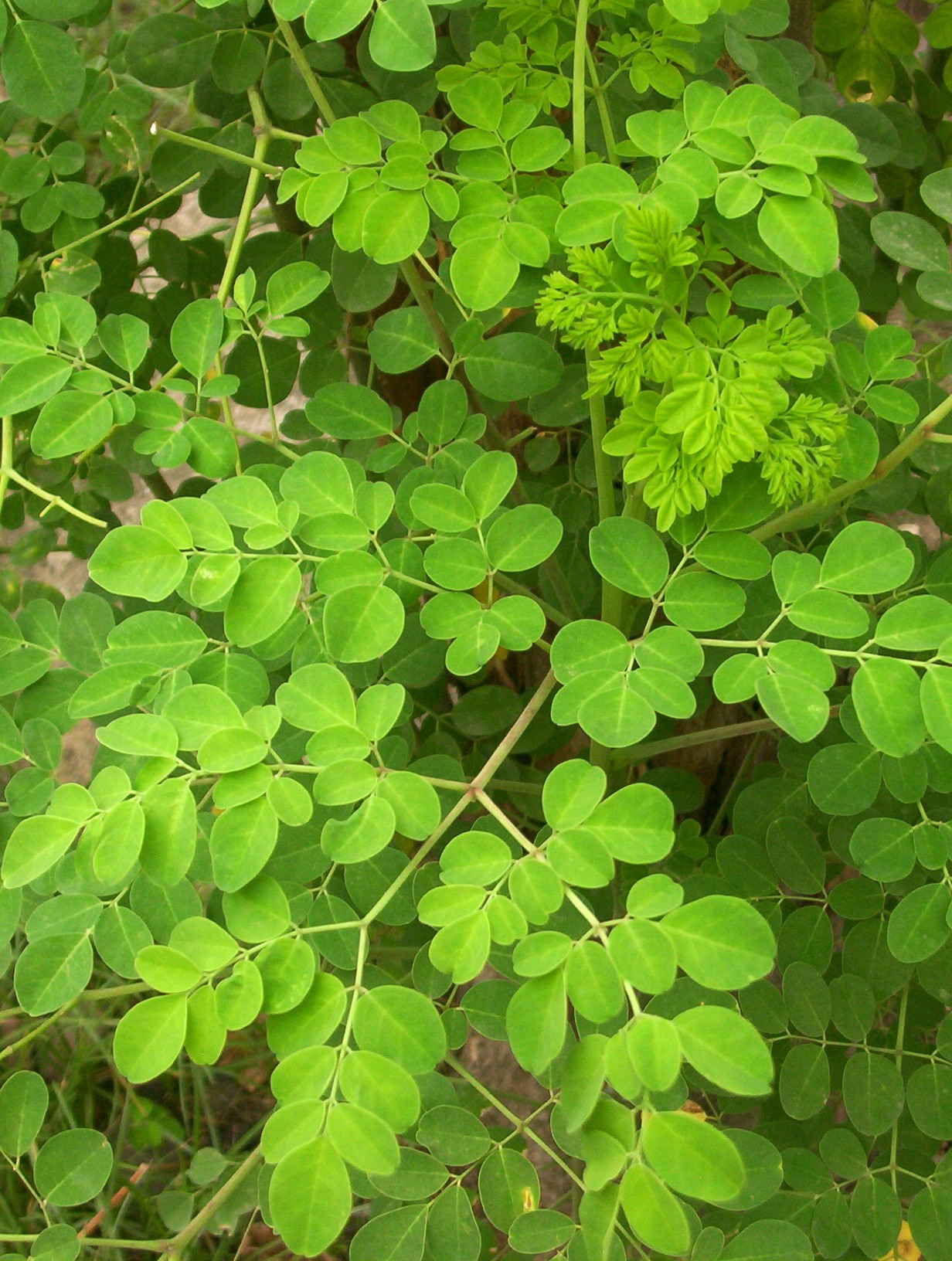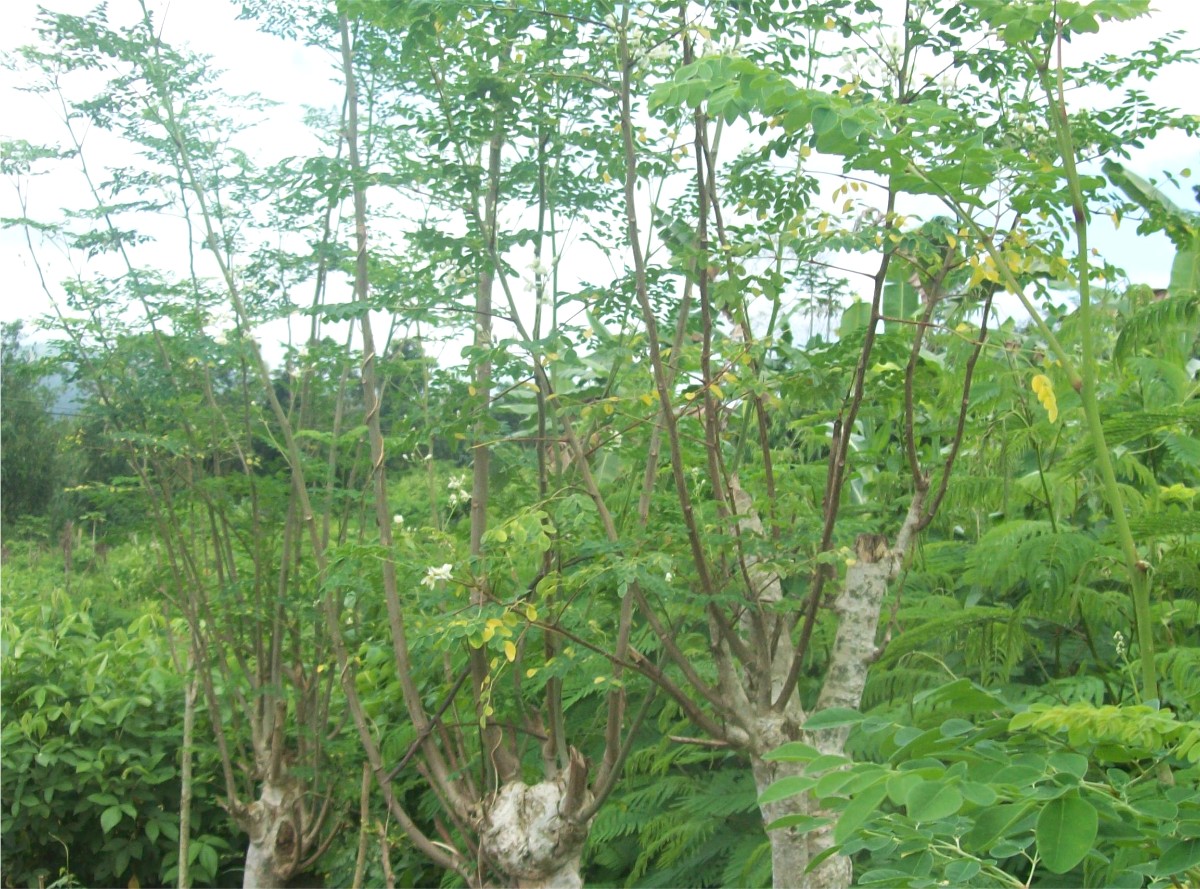Text and Photos by Henrylito D. Tacio
Malunggay, known in the science world as Moringa oleifera, is not only good for lactating mothers. It is also one of the scientifically-proven forage species that improves lactation in dairy cattle.
Such is the finding of research done for the Laguna-based Philippine Council for Agriculture, Aquatic and Natural Resources Research and Development (PCAARRD).
The Education Concerns for Hunger Organization (ECHO) describes malunggay as the “natural nutrition for the tropics.” The leafy vegetable is so rich in nutrients and vitamins that its image is, in fact, used as the official logo of the Food and Nutrition Research Institute (FNRI) of the Department of Science and Technology.
Filipino women consider malunggay as an ally in nurturing babies. In fact, they dubbed malunggay as their “best friend.” For lactating women, malunggay aids in the production of vitamin-rich milk for the newly-born baby. The calcium content of malunggay, nutritionists claim, is four times that found in milk.
It is for this reason why PCAARRD funded a Science and Technology-based Farm project “to demonstrate the value of malunggay foliage as feed supplement to increase milk production on dairy cows and its production as a livelihood option to rural farmers.”
In the study, the best practices of a farmer scientist (FS) and the prescribed science and technology (S&T) interventions were compared. FS practices involves feeding dairy cows with concentrates and the forage available on the farm. S&T practice includes feeding milking cows with concentrates and farm-grown grasses plus supplementation of malunggay foliage at 5 kilograms per day.
To compare milk production, five cows per practice were used. Initially, average milk production in FS was higher (10.6 kilograms) compared with S&T (10 kg). However, early lactation was higher in S&T (15.8 kg) compared with FS (11.3 kg).
During middle lactation, cows fed with malunggay still yielded more with 9.4 kg average production, while the FS practice only yielded 8.2 kg. A lower rate of decrease (6%) was also observed during the middle lactation in S&T practice compared to the MS practice (22.6%).
“This shows that supplementing malunggay foliage to dairy cows can increase milk considerably during early lactation (first 100 days) and lower rate of decrease in milk yield during middle lactation (second 100 days),” PCAARRD said in a press release.
“Supplementing malunggay foliage to milking cows gave an increased income equivalent to milk production per cow per day of 4.3 kg, 2.75 kg, and 1.74 kg at early, middle and late lactation, respectively,” it added.
In the study, malunggay were planted at a distance of 75 centimeters by 75 centimeters. The number of hills planted is 2,507 in 1,410 square meters. Harvest was done at 45 days cutting interval.
During the wet season, the total yield of malunggay pasture at the 45-day cutting interval was 5,204.4 kg. It was less during the dry season, at 2,346 kg.
During the administration of Ferdinand E. Marcos, there was a craze on malunggay as a solution to the malnutrition problem in the countryside. Marcos himself was a malunggay addict; he reportedly consumed soup littered with green leaves in every meal in addition to the saluyot and labong (bamboo shoots) as the main fare.
Malunggay is so rich in nutrients and vitamins that its image is, in fact, used as the official logo of the Food and Nutrition Research Institute (FNRI) of the Department of Science and Technology. “If Manny Pacquiao shows how a Filipino fights in the ring,” said one science scribe, “malunggay is the symbol of Filipino fight against malnutrition.”
Nutritionists aver that 100 grams of malunggay leaves yield the following: 75 calories of energy (higher than ampalaya, squash, tomatoes, or carrots), 5.9 grams protein (higher than cauliflower, lettuce, or mustard), 12.8 grams carbohydrate (higher than okra, papaya, or watermelon), 353 milligrams calcium (higher than gabi leaves, mung beans, squash, and sweet potato tops), 3.7 milligrams niacin (higher than other vegetables analyzed). And for thiamin, phosphorus, and ascorbic acid, malunggay is at the top of the list.


In addition, nutritionists affirm that 200 grams of malunggay leaves would give a nutritive value roughly equivalent to four eggs and two glasses of milk. Its iron compound prevents deficiency of red blood cells, known as anemia. And being a very rich source of calcium, it aids in maintaining healthy bones and teeth.
Malunggay is also rich in vitamin A (higher than red and green mung beans, radish, or eggplant), thus helping prevent xerophthalmia, a disease of the eye. Adults are urged to eat malunggay leaves as their vitamin C content is higher than those of ampalaya leaves. Vitamin C may protect against declining mental ability and stroke.
Aside from improving lactation in dairy cattle, planting malunggay trees would also help stabilize soil and contribute to the fight against deforestation. The malunggay tree is highly resistant to drought and needs little care. It is fast-growing and lives for an average of 50 years. It also makes excellent fuel and fertilizer.
“The tree is easy to grow, attaining tremendous height in a few months or even weeks if planted on good soil that is more or less loose and containing plenty of organic matter,” said Mac T. Ilaga, a former agronomy professor at the University of Philippines at Los Baños. “If its trunk attains the girth of a human body and is cut to a man’s height, it will produce profuse shoots loaded with eighty or more pods to a single tree.”
Now, let’s talk about cattle, the most important of all the animals domesticated by man and, next to dogs, the most ancient. So important is cattle that, when Rome was in her glory, a man’s wealth was often computed in terms of his cattle possessions. That the ownership of cattle implied wealth is further attested by the fact that the earliest known coin bears an ox head, and the Roman word “pecunia” for money was derived from the Latin word pecus, meaning cattle.
Curiously enough, the oldest known treatise on agriculture, written by the Greek poet Hesiod, referred to cattle. Apparently having some disturbing experience with young oxen, Hesiod advised: “For draught and yoking together nine-year-old oxen are best because, being past the mischievous and frolicsome age, they are not likely to break the pole and leave the plowing in the middle.”
Geneticists and anthropologists believed Africans domesticated local cattle some 10,000 years ago. A study was done by University of Missouri researchers of 134 cattle breeds. It reported that ancient domesticated African cattle originated in a region that covered modern-day Iraq, Jordan, Syria, and Israel.
In 2021, the total number of cattle in livestock farming in the country amounted to approximately 2.61 million, reflecting a slight increase from the previous year, according to Statista Research Department. Cattle farming is typically carried out in backyard or commercial farms.
The Philippine Statistics Authority says the top five regions in terms of inventory were Ilocos Region, Central Visayas, CALABARZON, Western Visayas, and Northern Mindanao. The combined stocks of these five regions accounted for 52.6% of the country’s total cattle inventory.
In the Philippines, there are three sources of fresh milk: cattle, carabao and goats. Among these three livestock, cattle is the top producer of milk. Unfortunately, dairy isn’t a big industry in the country.
The reason: Filipinos don’t drink milk just like they do with coffee or soft drinks. “Milk isn’t traditionally part of the Filipino diet,” said Corazon Cerdena, who conducted the 1997 Formative Research on Milk and Milk Products for FNRI.

